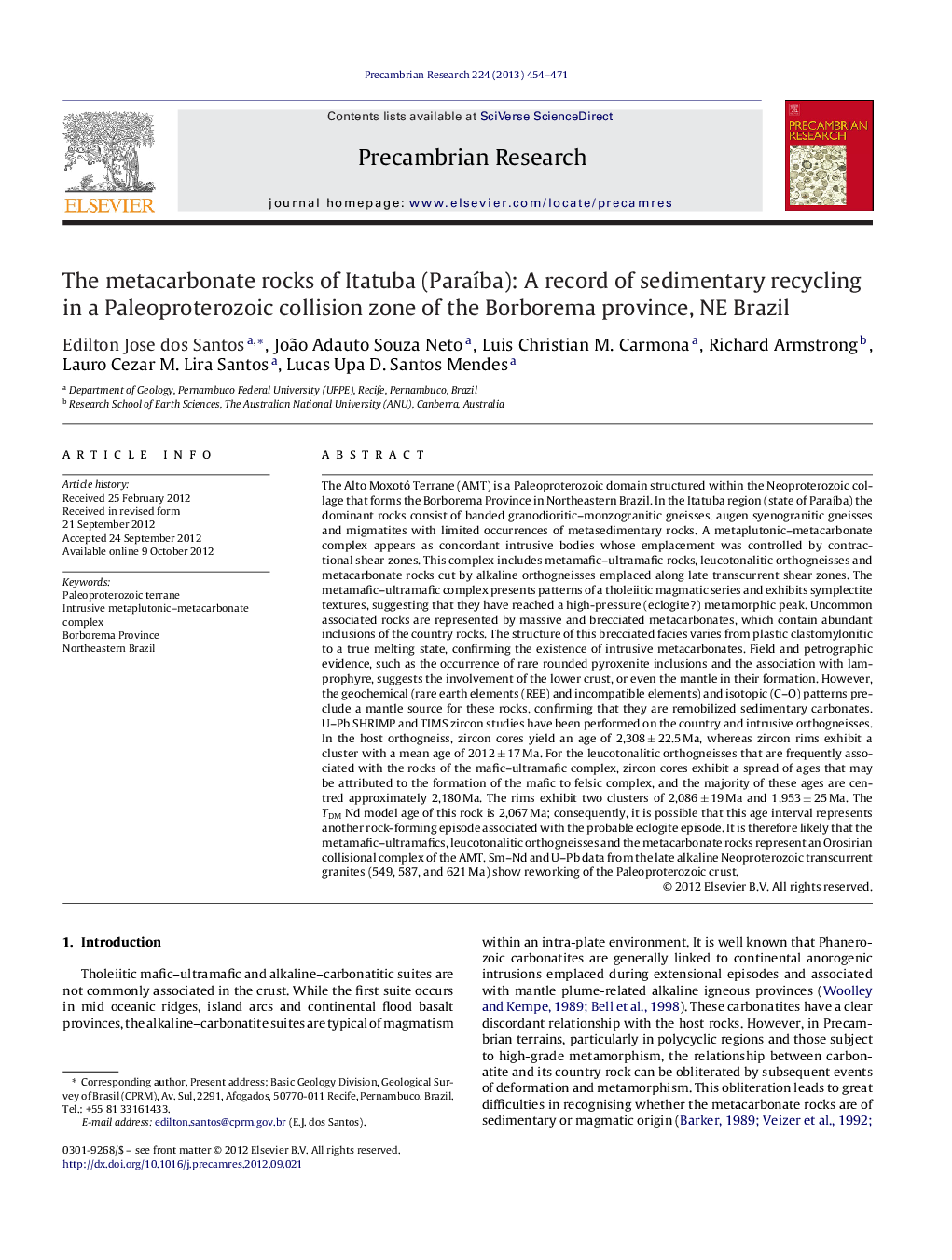| کد مقاله | کد نشریه | سال انتشار | مقاله انگلیسی | نسخه تمام متن |
|---|---|---|---|---|
| 4723357 | 1639650 | 2013 | 18 صفحه PDF | دانلود رایگان |

The Alto Moxotó Terrane (AMT) is a Paleoproterozoic domain structured within the Neoproterozoic collage that forms the Borborema Province in Northeastern Brazil. In the Itatuba region (state of Paraíba) the dominant rocks consist of banded granodioritic–monzogranitic gneisses, augen syenogranitic gneisses and migmatites with limited occurrences of metasedimentary rocks. A metaplutonic–metacarbonate complex appears as concordant intrusive bodies whose emplacement was controlled by contractional shear zones. This complex includes metamafic–ultramafic rocks, leucotonalitic orthogneisses and metacarbonate rocks cut by alkaline orthogneisses emplaced along late transcurrent shear zones. The metamafic–ultramafic complex presents patterns of a tholeiitic magmatic series and exhibits symplectite textures, suggesting that they have reached a high-pressure (eclogite?) metamorphic peak. Uncommon associated rocks are represented by massive and brecciated metacarbonates, which contain abundant inclusions of the country rocks. The structure of this brecciated facies varies from plastic clastomylonitic to a true melting state, confirming the existence of intrusive metacarbonates. Field and petrographic evidence, such as the occurrence of rare rounded pyroxenite inclusions and the association with lamprophyre, suggests the involvement of the lower crust, or even the mantle in their formation. However, the geochemical (rare earth elements (REE) and incompatible elements) and isotopic (C–O) patterns preclude a mantle source for these rocks, confirming that they are remobilized sedimentary carbonates. U–Pb SHRIMP and TIMS zircon studies have been performed on the country and intrusive orthogneisses. In the host orthogneiss, zircon cores yield an age of 2,308 ± 22.5 Ma, whereas zircon rims exhibit a cluster with a mean age of 2012 ± 17 Ma. For the leucotonalitic orthogneisses that are frequently associated with the rocks of the mafic–ultramafic complex, zircon cores exhibit a spread of ages that may be attributed to the formation of the mafic to felsic complex, and the majority of these ages are centred approximately 2,180 Ma. The rims exhibit two clusters of 2,086 ± 19 Ma and 1,953 ± 25 Ma. The TDM Nd model age of this rock is 2,067 Ma; consequently, it is possible that this age interval represents another rock-forming episode associated with the probable eclogite episode. It is therefore likely that the metamafic–ultramafics, leucotonalitic orthogneisses and the metacarbonate rocks represent an Orosirian collisional complex of the AMT. Sm–Nd and U–Pb data from the late alkaline Neoproterozoic transcurrent granites (549, 587, and 621 Ma) show reworking of the Paleoproterozoic crust.
► A case-study of intrusive carbonate rocks in a Paleoproterozoic high-grade gneiss terrane is described.
► Association with retroeclogites is compatible with intrusion along a collisional zone.
► Geochemical data support the involvement of the lower crust in carbonate melt formation.
► The model may be applicable to many Paleoproterozoic carbonate rocks worldwide.
Journal: Precambrian Research - Volume 224, January 2013, Pages 454–471